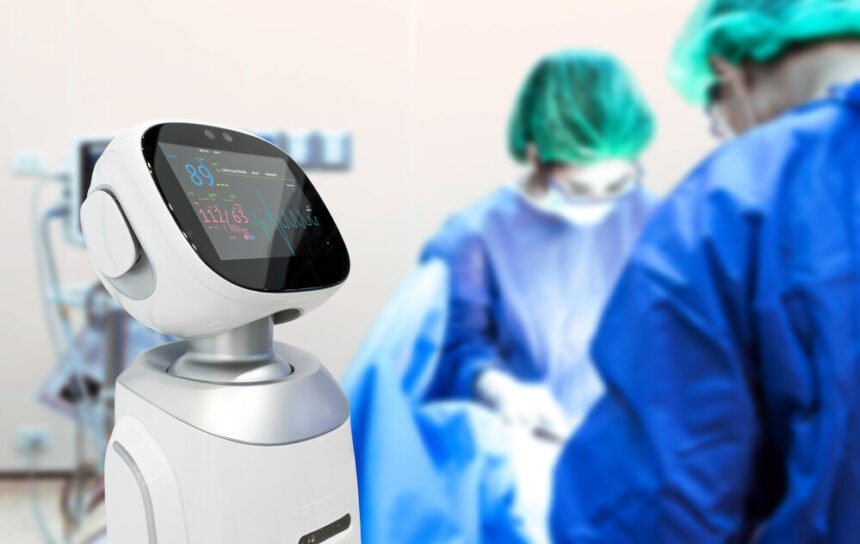The majority of the latest technological innovations have garnered negative media attention with the ways that their flaws and possible risks are being constantly highlighted. Even though technology has its shortcomings, there are no doubts that it is improving people lives in all ramifications. The Internet of Things, Artificial Intelligence, Machine Language and Robotics are used in almost every sectors that exist. From adopting them to improve yield in the agricultural sector to web hosting companies utilizing AI software for better security, they offer boundless possibilities.
Take a moment to imagine robots performing operations on humans in theaters. This possibility is no longer confined to the space of science fiction. The mere thought of entrusting the medical care of patients into the mechanical hands of robots seems scary. Truth be told, it’s high time we become ready to adapt.Robotic technology is no longer a strange concept in the field of medicine. It is already helping health care providers to aggregate and process data which is useful during diagnosis and treatment. The demand for medical robots is increasing rapidly. In line with a report from Credence Research, the global medical robotics market was valued at $7.24 billion in 2015 and is expected to grow to $20 billion by 2023.Robots have the ability to last for several hours once fully charged and rarely make errors. Here are some of the significant ways that robotic technology keep influencing the field of medicine.
1. Guiding needle big data
One of the medical procedures that is minimally invasive involves the insertion of needles into soft tissues. This approach is commonly used for taking blood samples or other bodily fluids in the lab and introducing medication into the human body. For most people, it isn’t a pleasant experience and any slight error may result in grave consequences like infections and malignancies. More so, it can take a phlebotomist several attempts before discovering the right vein.Veebot, a robot that guides flexible needles with precision and accuracy has been developed by scientists. It locates the appropriate vein within a minute and comes handy for minimizing the many problems associated with the traditional method of needle insertion.
2. Assisting surgeons
The daVinci Surgical System is a medical robot that is already helping doctors during surgeries. It comprises of a 3D high definition vision system and tiny wristed instruments that are far more flexible than the human hands. The surgeon has complete control of the robot when performing both minor and major operations. Patients often experience fewer incision because it operates and moves with great precision that the human hands can’t achieve. As a result, there are lesser infections, pain or loss of blood and the patient will heal rapidly.
3. Robotic staff members
It is quite common for healthcare professionals to be overwhelmed by different tasks or a health care center may have insufficient man power.In view of this, many hospitals are now using robots to handle repetitive tasks that include mixing, measuring and delivering medications to patients. A typical example of machines that handles these task effectively is the TUG robot. It can carry many carts containing different supplies to the particular location where they are needed. Taking this approach is a sure way to give staffs adequate time and energy to focus on the human aspect of healthcare like communicating and providing emotional support for patients. Although it has been argued that machines will totally replace humans in the workplace, the chances of this occurrence taking place in the medical field are really slim. The human touch will still be necessary. There are speculations that introduction of robots in various sectors will even lead to the emergence of new jobs.
4. Providing patients with exoskeletons and prosthetics
Decades ago, paralyzed patients and those who lost their limbs as a result of an injury or a disease had to accept their fate and face life squarely. Things have really changed as these people can regain the full functionality of a specific body part and even engage in sporting activities. Bionic exoskeletons are available and in use for disabled and paralyzed patients. They are wearable robotics that fit together at the hip and knee. It has also made it possible for people suffering from spinal cord injuries to stand uprightly and walk on their own.
5. Disinfecting health centers
There has been a rapid increase in the number of antibiotic resistant bacteria that are responsible for hospital acquired infections (HIA) such as C. diff (Clostridium difficile). These infections are the number one causes of death worldwide. In order to tackle this issue, a Texas based company known as Xenex has developed a robot that make use of hydrogen peroxide vapors and high intensity UV light to disinfect an entire health care facility. It works efficiently and leads to the cellular damage of deadly microorganisms. As a result of its action, the number of HIA related cases will be drastically reduced.
6. Rehabilitating and assisting patients
Elderly or disabled patients usually needs special care. Due to the shortage of caregivers, it may be difficult for them to get the type of attention that they need. There are medical robots that help people with disabilities or those recovering from serious medical conditions like spinal cord injuries to boost their motor function. These robots can be personalized to each patient needs and speed their recovery. For instance, RIBA (Robot for Interactive Body Assistance) can carry and move patients from their beds straight into a wheelchair and assist them to stand on their feet regardless of the patient’s body weight.
7. Diagnosis and treatment of life-threatening diseases
Chronic diseases like cancer often lead to death in the past. There is now a renewed hope for people battling with serious medical conditions of getting a permanent cure and living a healthy life. Researchers are currently developing micro bots with the ability to travel through bodily fluids to deliver medication where it is needed. Recently, ViRob was developed in Israel to locate and treat tumors by creeping through the body. In the nearest future, robots will be able to carry out remote diagnosis in situations where a healthcare provider is out of reach. In addition, nanobots will have the capacity to search for the origin of an illness and inform a patient of disease by monitoring the internal organs with the help of dedicated smartphone apps.











